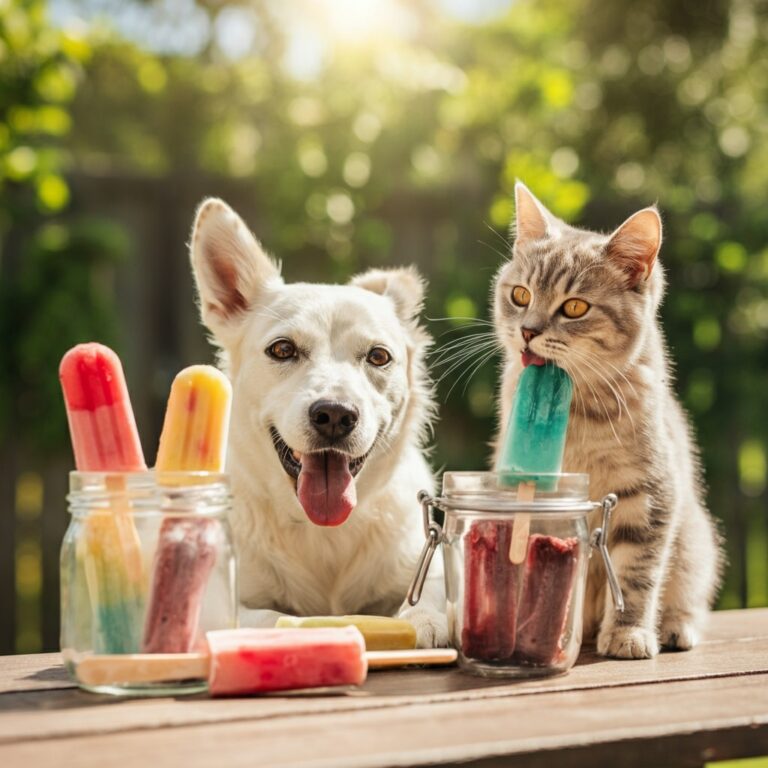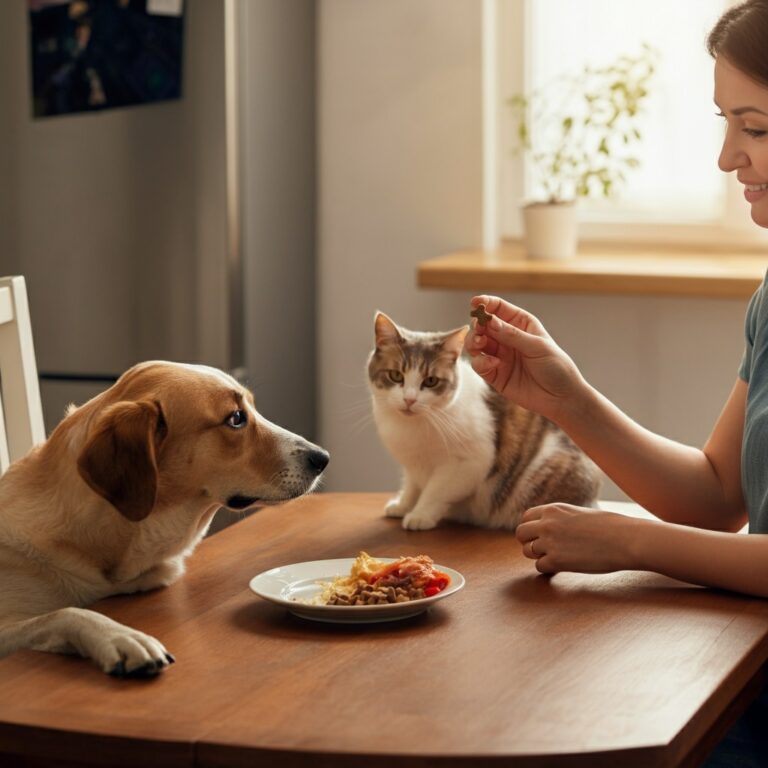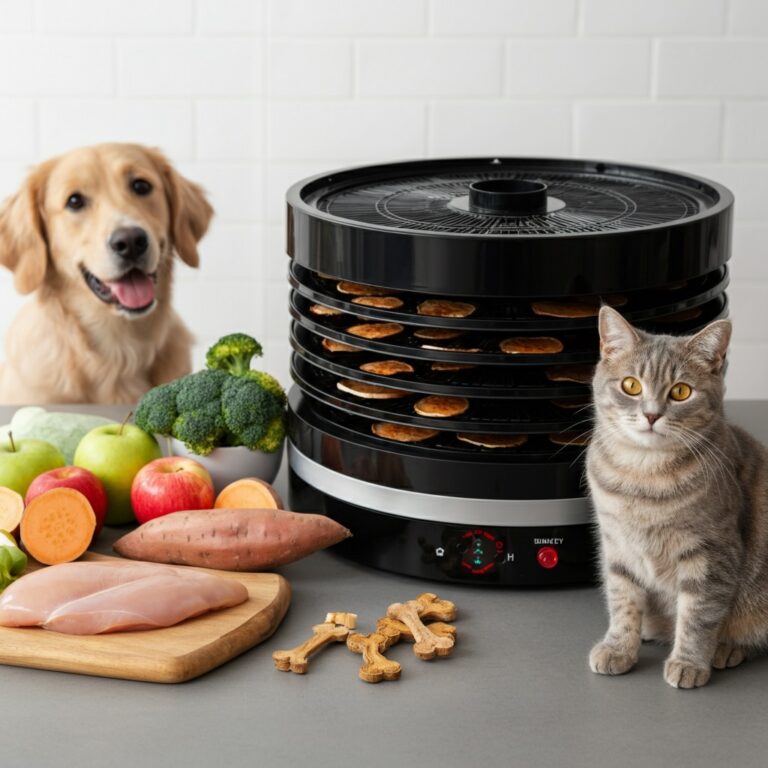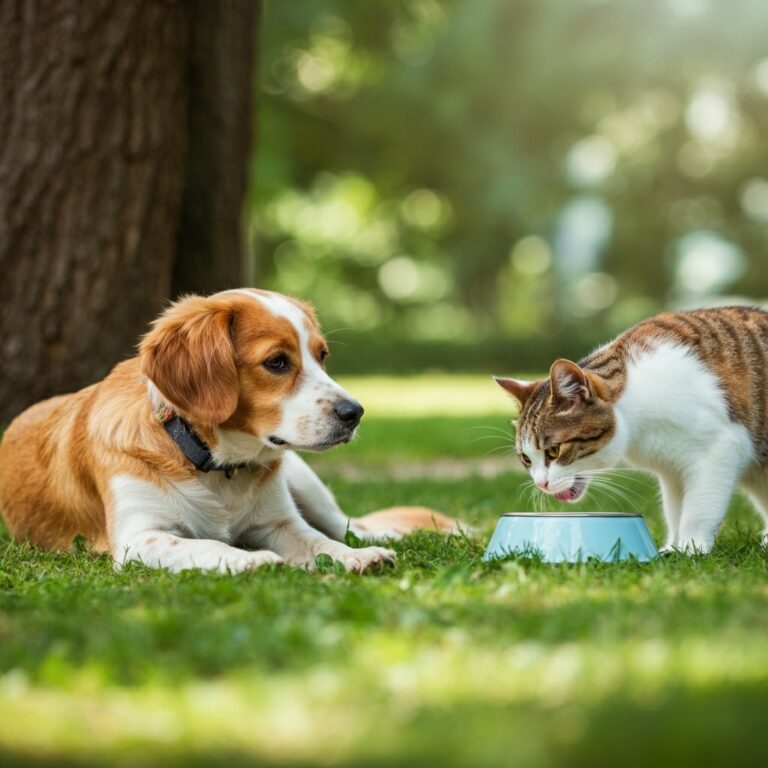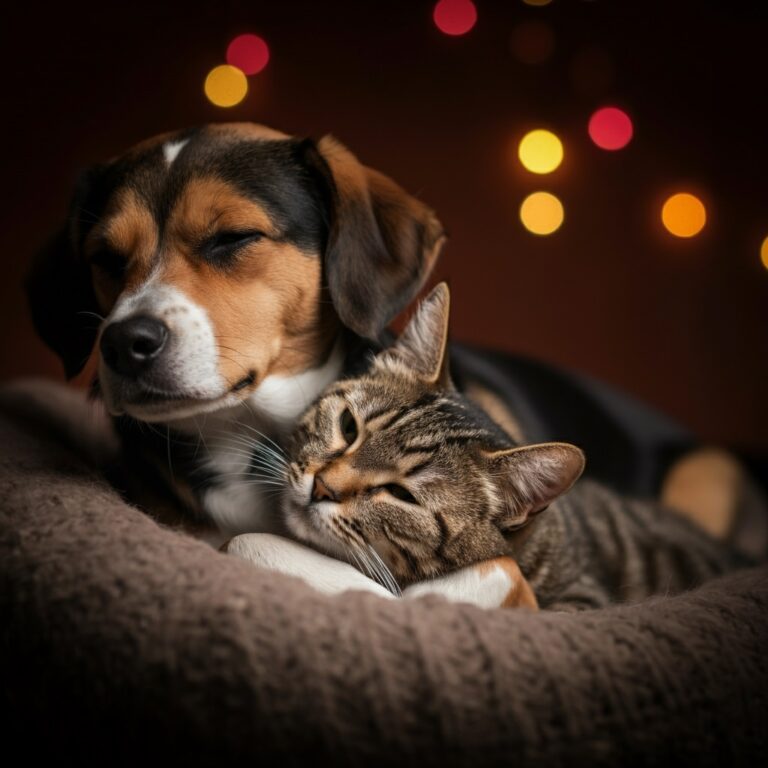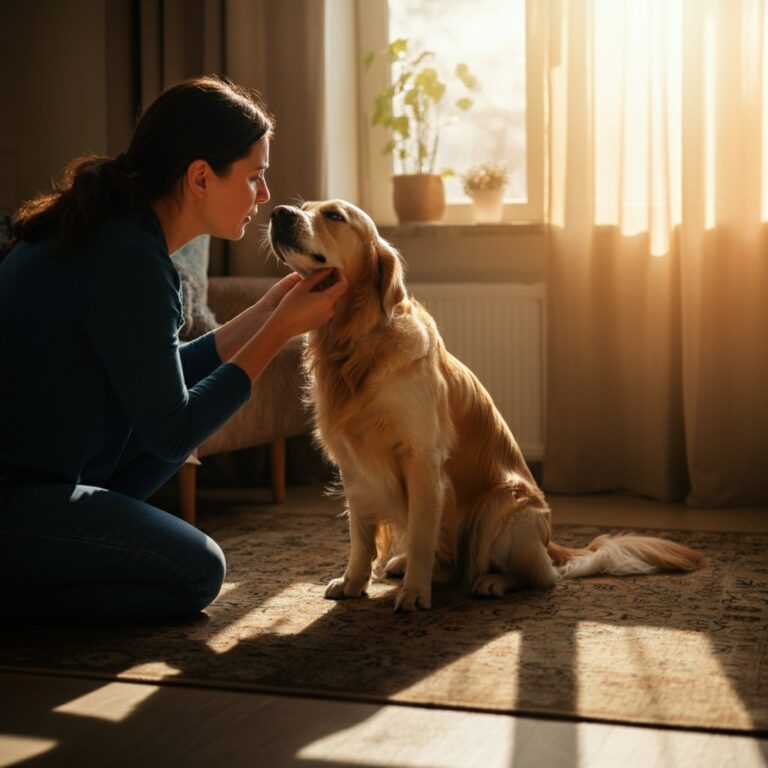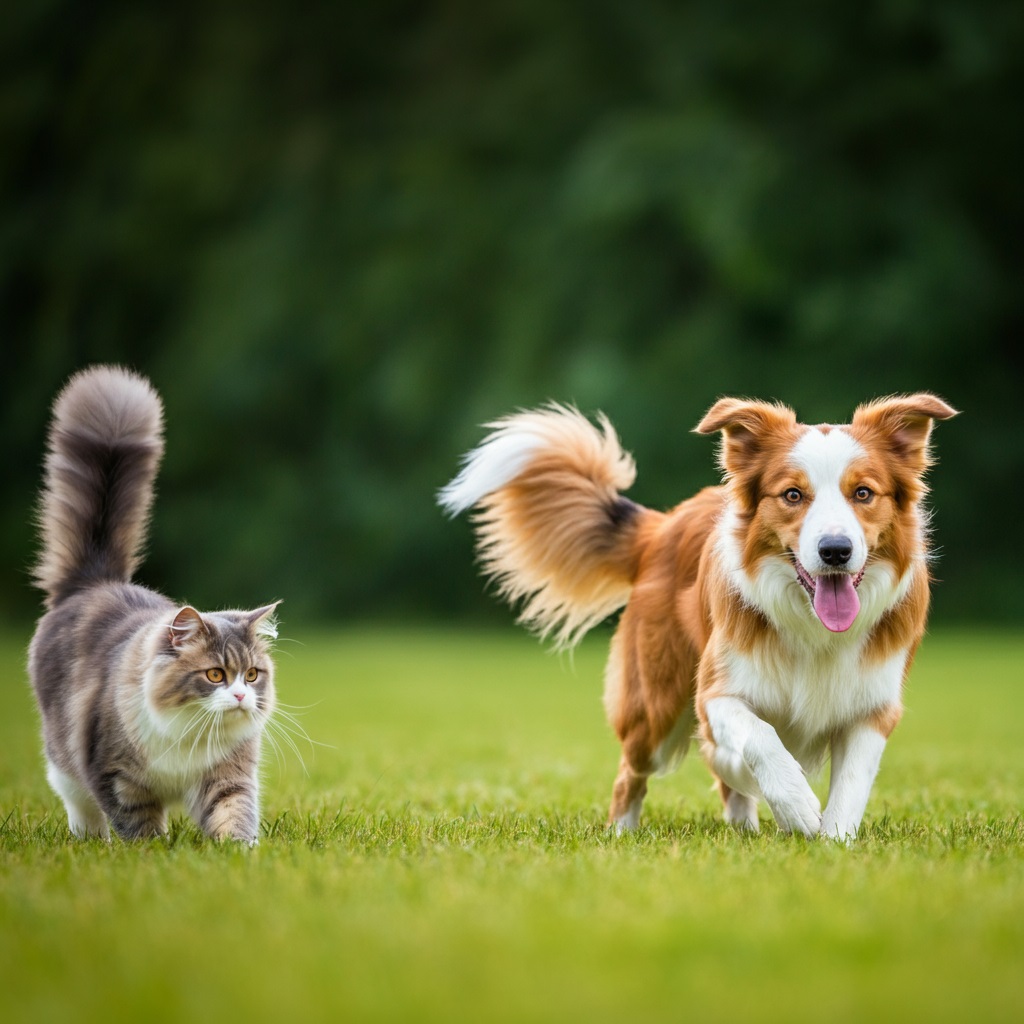
Every pet owner has faced this dilemma: Fluffy is staring at her food bowl while also eyeing the leash hanging by the door. Should you fill that bowl first, or lace up your walking shoes? The timing of meals around exercise affects your pet’s comfort, digestion, and overall health more than you might realize.
The answer isn’t one-size-fits-all. Dogs and cats have different digestive systems, energy needs, and exercise tolerances. What works for a high-energy Border Collie might spell disaster for a Persian cat. Understanding how your pet’s body processes food and handles physical activity will help you create the perfect routine.
This comprehensive guide explores the science behind pet nutrition timing, addresses the unique needs of different animals, and provides practical strategies to keep your furry friends healthy and happy. Whether you’re a new pet parent or looking to optimize your current routine, you’ll discover evidence-based recommendations that work for real-life situations.
The Science Behind Pet Digestion and Exercise
Pet digestion operates differently than human digestion, and understanding these differences is crucial for timing meals appropriately. When pets eat, blood flow redirects to their digestive organs to process food efficiently. This natural process can last anywhere from 30 minutes to several hours, depending on the meal size and your pet’s individual metabolism.
During exercise, blood flow shifts toward muscles and vital organs needed for physical activity. This creates a potential conflict when feeding and exercise occur too close together. The body struggles to simultaneously support both digestion and physical exertion, which can lead to discomfort or more serious complications.
Dogs are particularly susceptible to gastric dilatation-volvulus (GDV), commonly known as bloat, when vigorous exercise follows a large meal. This life-threatening condition occurs when the stomach fills with gas and potentially twists, cutting off blood supply. While less common in smaller dogs, the risk increases significantly in large, deep-chested breeds like Great Danes, German Shepherds, and Golden Retrievers.
Cats face different but equally important considerations. Their digestive systems evolved for frequent small meals rather than large portions. A cat that exercises immediately after eating may experience nausea, vomiting, or reluctance to move. Since cats are naturally less inclined toward sustained exercise than dogs, the timing becomes even more critical for their comfort and willingness to stay active.
The type of exercise also influences ideal timing. A leisurely walk places different demands on the body than an intense game of fetch or agility training. Low-intensity activities may be perfectly safe shortly after eating, while high-intensity exercise requires longer waiting periods.
Dogs: Timing Meals Around Walks and Play
For dogs, the general rule is simple: avoid feeding large meals immediately before or after intense exercise. Most veterinarians recommend waiting at least 30 minutes to 2 hours after eating before engaging in vigorous activity, depending on your dog’s size, breed, and the meal’s size.
Small dogs and puppies have faster metabolisms and smaller stomach capacities, allowing for more flexible timing. A Chihuahua or Yorkshire Terrier can typically handle light exercise 30 minutes after a small meal. However, larger breeds require longer waiting periods. A Great Dane should wait at least 2 hours after a full meal before engaging in running, jumping, or extended play sessions.
Morning routines often present the biggest challenge for dog owners. Many dogs are eager for their morning walk immediately after waking up. Consider offering a small treat or tiny portion of their breakfast before the walk, then providing the main meal afterward. This approach satisfies their hunger without compromising safety or comfort during exercise.
Pre-exercise snacking can actually benefit some dogs, particularly those engaged in extended activities like hiking or running. A small amount of easily digestible food 15-30 minutes before exercise can provide sustained energy without causing digestive upset. Think of it as fuel for the journey ahead, but keep portions minimal.
Post-exercise feeding requires its own considerations. Dogs often feel ravenous after physical activity, but resist the urge to immediately fill their bowl. Allow at least 15-30 minutes for your dog to cool down, catch their breath, and return to a relaxed state. This cooling-off period helps their digestive system prepare for food processing.
Water timing deserves special attention too. Always ensure fresh water is available, but monitor intake immediately before intense exercise. Some dogs gulp large amounts of water, which can contribute to bloat when combined with vigorous movement. Offer frequent small drinks rather than allowing unlimited access right before exercise.
Cats: Unique Considerations for Feline Feeding
Cats present unique challenges when coordinating meals and exercise. Their natural hunting instincts suggest they’re designed to eat small, frequent meals throughout the day rather than large portions. This eating pattern actually works in their favor when timing meals around physical activity.
Most cats prefer light exercise sessions rather than sustained cardio workouts. A typical play session with feather wands, laser pointers, or interactive toys rarely exceeds 10-15 minutes. This shorter duration means cats can often handle light play even with food in their stomachs, though individual tolerance varies.
The key with cats lies in understanding their personal preferences and physical responses. Some cats become lethargic after eating and show no interest in play, while others maintain normal activity levels. Observe your cat’s behavior patterns to determine what works best for their individual needs.
Indoor cats face particular challenges since they rely entirely on their owners for both food and exercise opportunities. Creating a routine that incorporates both needs requires careful planning. Consider offering puzzle feeders or food-dispensing toys that combine mental stimulation with light physical activity. These tools naturally pace eating while providing gentle movement.
For more active cats who enjoy vigorous play sessions, apply similar timing principles as you would for small dogs. Wait 30-60 minutes after a full meal before engaging in intense play. However, light activities like gentle pouncing or slow stalking games can often continue even shortly after eating.
Senior cats require special consideration, as their digestive systems may be more sensitive and their activity levels naturally lower. These cats often benefit from smaller, more frequent meals paired with gentle, short play sessions. The reduced meal size minimizes digestive stress while maintaining their interest in physical activity.
Exercise Intensity and Meal Timing Guidelines
The intensity and duration of exercise dramatically affect optimal meal timing. Understanding these relationships helps you create safer, more effective routines for your pets.
Low-intensity activities include leisurely walks, gentle play, and basic training sessions. These activities place minimal stress on the digestive system and can often occur within 30 minutes of small meals. Examples include short neighborhood walks for dogs or gentle toy play for cats.
Continues after advertising
Moderate-intensity exercise encompasses brisk walks, moderate play sessions, and training that involves movement but doesn’t leave your pet panting heavily. For these activities, wait 1-2 hours after full meals, or offer only small treats beforehand. Most daily exercise routines fall into this category.
High-intensity exercise includes running, extended hiking, agility training, or any activity that significantly elevates your pet’s heart rate and breathing. These activities require the longest waiting periods—typically 2-3 hours after full meals for large dogs, and 1-2 hours for smaller pets.
Duration also matters as much as intensity. A 5-minute game of fetch differs significantly from a 45-minute hike, even if both involve running. Extended activities deplete energy stores and require more careful nutrition planning, both before and after exercise.
Environmental factors add another layer of complexity. Hot weather increases the risk of digestive upset when food and exercise combine poorly. Cold weather may require additional energy, making pre-exercise snacking more beneficial. Always consider weather conditions when planning meal and exercise timing.
Special Considerations for Different Pet Types
Puppies and kittens have unique nutritional and exercise needs that affect meal timing strategies. Young animals require frequent meals to support rapid growth but also have boundless energy that can’t wait for lengthy digestion periods.
Puppies under six months typically need three to four meals daily. This frequent feeding schedule makes timing more complex but also more forgiving—smaller meals digest faster, reducing waiting times between eating and playing. Focus on avoiding intense exercise immediately after meals, but don’t worry as much about light play and exploration.
Senior pets face opposite challenges. Older dogs and cats may have slower digestion, requiring longer waiting periods between meals and exercise. However, their activity levels are often naturally lower, making timing less critical. Monitor senior pets closely for signs of discomfort and adjust routines accordingly.
Pets with medical conditions require individualized approaches. Animals with diabetes, kidney disease, or digestive disorders may need specific meal timing that takes precedence over exercise considerations. Always consult with your veterinarian to create safe routines for pets with health issues.
Working dogs and highly active pets have unique needs that mirror those of canine athletes. These animals may benefit from specialized feeding strategies, including multiple small meals and carefully timed pre-exercise snacks. If your pet regularly engages in demanding activities, consider consulting with a veterinary nutritionist.
Overweight pets require special attention to both diet and exercise timing. These animals may be more prone to digestive upset and heat exhaustion, making careful timing even more important. Focus on creating sustainable routines that support gradual weight loss while maintaining comfort and safety.
Creating the Perfect Routine for Your Pet
Developing an effective meal and exercise schedule requires observing your pet’s individual needs, preferences, and responses. Start by noting their current eating and activity patterns, then gradually adjust timing based on the guidelines provided.
Morning routines often set the tone for the entire day. Many pet owners find success with this schedule: offer a small morning treat, provide exercise, then serve the main breakfast meal. This approach satisfies early morning hunger while avoiding post-meal exercise complications.
Evening routines can follow a similar pattern, but consider your pet’s activity level throughout the day. Pets who’ve been relatively inactive may benefit from pre-dinner exercise to stimulate appetite and improve digestion. Active pets might prefer post-dinner relaxation.
Consistency helps pets adapt to new routines more easily. Try to feed and exercise at similar times each day, allowing your pet’s digestive system to anticipate and prepare for these activities. However, maintain some flexibility for real-life scheduling challenges.
Monitor your pet’s responses during routine changes. Signs of digestive discomfort include excessive panting, drooling, reluctance to move, or visible stomach distension. If you notice these symptoms, extend the waiting period between meals and exercise.
Keep detailed records during the adjustment period. Note meal times, exercise duration and intensity, and your pet’s responses. This information helps identify patterns and optimal timing for your specific pet.
Signs to Watch For and When to Adjust
Understanding your pet’s body language and physical responses helps you fine-tune meal and exercise timing for optimal comfort and safety. Learn to recognize both positive and negative signs that indicate whether your current routine is working.
Positive indicators include normal appetite, enthusiasm for exercise, comfortable breathing during and after activity, and normal bathroom habits. Pets who are thriving on their current schedule typically maintain steady energy levels throughout the day and show eagerness for both meals and physical activity.
Warning signs require immediate attention and routine adjustments. Heavy panting, excessive drooling, or reluctance to move after eating suggests meals are too close to exercise time. Vomiting, diarrhea, or visible stomach distension are more serious symptoms that warrant veterinary consultation.
Behavioral changes often provide early warning signs before physical symptoms appear. A dog who usually loves walks but starts showing reluctance might be experiencing discomfort from poor meal timing. Similarly, a cat who stops playing after meals might need longer digestion periods.
Seasonal adjustments become necessary as weather changes affect your pet’s exercise patterns and digestive sensitivity. Summer heat requires longer waiting periods and increased attention to hydration. Winter weather might allow for more flexible timing but could increase appetite and energy needs.
Age-related changes require ongoing routine adjustments. Puppies and kittens outgrow their initial schedules as they mature, while senior pets may need increasingly longer rest periods between meals and exercise.
Read More👉 The Psychology of Why Pets Make Us Happy
Your Pet’s Health Comes First
The relationship between meal timing and exercise significantly impacts your pet’s comfort, safety, and long-term health. While general guidelines provide a starting point, every pet is unique and requires individualized attention to determine optimal routines.
Start with the basic principle of allowing adequate digestion time before vigorous exercise, then adjust based on your pet’s specific responses and needs. Remember that consistency helps, but flexibility remains important for adapting to changing circumstances and your pet’s evolving needs.
Take time to observe and understand your pet’s individual patterns. Document what works and what doesn’t, and don’t hesitate to consult with your veterinarian if you notice concerning symptoms or have questions about your pet’s specific needs.
Most importantly, prioritize your pet’s comfort and safety over convenience. A routine that works for your schedule but causes your pet discomfort isn’t sustainable or healthy. With patience and attention to detail, you can create a feeding and exercise schedule that keeps your furry friend happy, healthy, and energetic for years to come.
